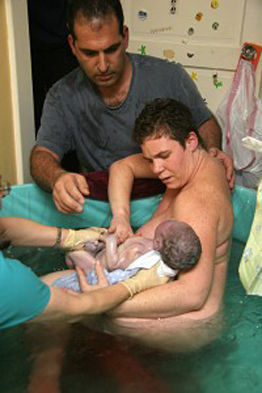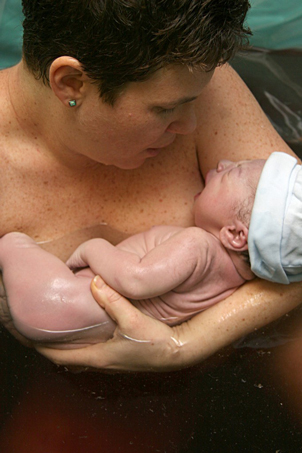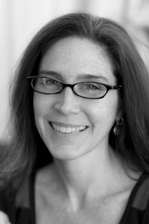January 06, 2016
Understanding Recent Home Birth Research: Guidance for Birth Professionals and Consumers
By: Sharon Muza, BS, LCCE, FACCE, CD/BDT(DONA), CLE | 0 Comments
 In the past month, two new studies have been released - one in the New England Journal of Medicine (NEJM), the other in the Canadian Medical Association Journal (CMAJ) comparing out-of-hospital birth outcomes to hospital outcomes. These studies join a growing body of literature that consistently show high rates of obstetric intervention in U.S. hospitals and also show low risk to neonates regardless of setting. However, the recent NEJM study found a small, but statistically significant increase in risk for perinatal mortality for babies born out-of-hospital . Today, Jeanette McCulloch of BirthSwell interviews Melissa Cheyney, PhD, CPM, LDM and the Chair of the Midwives Alliance Division of Research, on her perspective on how childbirth educators and other professionals can help families interpret the new study when making their own decisions about place of birth. Sharon Muza, Science & Sensibility Community Manager
In the past month, two new studies have been released - one in the New England Journal of Medicine (NEJM), the other in the Canadian Medical Association Journal (CMAJ) comparing out-of-hospital birth outcomes to hospital outcomes. These studies join a growing body of literature that consistently show high rates of obstetric intervention in U.S. hospitals and also show low risk to neonates regardless of setting. However, the recent NEJM study found a small, but statistically significant increase in risk for perinatal mortality for babies born out-of-hospital . Today, Jeanette McCulloch of BirthSwell interviews Melissa Cheyney, PhD, CPM, LDM and the Chair of the Midwives Alliance Division of Research, on her perspective on how childbirth educators and other professionals can help families interpret the new study when making their own decisions about place of birth. Sharon Muza, Science & Sensibility Community Manager
Jeanette McCulloch: On Tuesday, Henci Goer compared the results of several recent studies on the safety of out-of-hospital birth in a blog post here on Science & Sensibility. As Henci's post points out, we've seen conflicting research around out-of-hospital outcomes. Wearing your hat as a researcher and a practicing midwife, how do you recommend families use the results of the NEJM study to inform their place of birth selection?
Melissa Cheyney:I have actually had dozens of calls from women considering home and birth center births over the last week, giving me the opportunity to discuss this very question.
What I say first is that we need to look at what the authors themselves say about their findings. Snowden and colleagues summarize three key findings for us.
First, they conclude that rates of obstetrical intervention are high in U.S. hospitals. They found large absolute differences in the risks of interventions between planned out-of-hospital births and in-hospital births. This first finding has been affirmed across numerous other recent studies.
Secondly, they conclude that adverse fetal and neonatal outcomes are infrequent across all birth settings, and that the absolute differences in risk observed between planned birth locations are also small. This is a very important point as it is easy to becomes excessively myopic, limiting our conversation to small differences in relative risk rather than talking about how very low the absolute risk for an adverse outcome for the baby may be in either setting.
As an anthropologist with projects in numerous countries, this study is an excellent reminder that it is a privilege - a 'first world problem' as some of my study participants have referred to it ' to be debating what to do about 1.2 vs 2.4/1000 fetal death rate. The rate of fetal loss in Sierra Leone for pregnancies that make it to at least seven months gestation is 8.4/1000 and the perinatal mortality rates is 34/1000!
While we want to do all we can to make sure as many babies as possible in the US are born healthy and well to mothers who are healthy and well, it is also helpful sometimes to look up from a single statistic and contemplate some larger questions. How do we navigate the often delicate balance between maternal and fetal harms and benefits in both current and future pregnancies? Can we continue to advocate hospital births for all when the U.S. is already spending nearly half of the world's health care dollars with much of that going toward covering maternity care costs?
Thirdly, the authors conclude that planned out-of-hospital births are associated with an excess of less than one fetal death per 1000 deliveries. I am not sure how many readers really took this message away from the article as the popular media tended to stress a doubling of risk without qualification. I encourage clients to read this study along with the larger body of literature on home and birth center birth safety (Henci Goer's piece at Science & Sensibility is a great starting place) because the authors of the NEJM piece are themselves careful to stress in their limitations section that the sample size for OOH births was small in the Oregon study. In fact the entire study is based on 10 deaths in the OOH sample.
When I look at the balance of evidence across the totality of published literature, what I see is no perfect option for birthing families in our country, and when no clear cut, risk free option is available, we allow families to choose the option that fits best with their values, beliefs and desires.
JMc: The degree to which out-of-hospital providers are integrated into the larger maternal health care system varies from community to community. A lack of integration is cited by the authors as potentially impacting outcomes in the U.S. What are some signs of safe coordination that families can look for - and policy makers can advocate for - in their own communities?
MC: This is a hugely important piece of this question I think. As I have discussed extensively elsewhere (Cheyney, Bovbjerg and Burcher 2015), we know from work coming out of Canada, the UK and The Netherlands, that birth outside of the hospital can be as safe, and for some variables, safer than birth in the hospital.
Yet, in our country, in many communities, we do not have an integrated system of seamless collaboration and transfer across all birth settings. I agree that this explains part of what Snowden and colleagues are seeing in Oregon. As a practicing midwife in Oregon for 15 years, I am personally grateful to enjoy a truly integrated system of medical back-up in my own community where I transfer to, and can consult freely with, beloved midwife and physician colleagues. However, as an anthropologist, I have recorded hundreds of stories of individual cases and entire communities where integration and collaboration does not occur. Instead, midwife-physician relationships are non-existent, strained or even openly hostile (Cheyney, Burcher and Everson 2014).
As Henci so clearly states, midwives alone cannot be held responsible for creating an integrated system. A willingness to increases safety through meaningful collaboration must also come from the medical establishment. While some obstetricians may be able to envision a world without home or birth center midwives, midwives cannot provide safe and empowering care for women without access to medical back-up and collaboration when needed.
I encourage families who are exploring their birthing options - or advocating for increased integration in their own communities - to ask area midwives and obstetricians about referral relationships, transfer protocols, and relationships between transferring and receiving providers. The Best Practice Guidelines: Transfer from Planned Home Birth to Hospital are a model for facilitating safe and mutually respectful interprofessional communication. They provide a great foundation for increasing collaboration and smoothing transfers of care in every community.
JMc: The NEJM article suggests that a midwife's credentials or training may play a role in outcomes. When a family is selecting a provider for out-of-hospital birth, they may be choosing between a Certified Nurse Midwife/Certified Midwife (CNM/CM) or Certified Professional Midwife/Licensed Midwife (CPM/LM). (Check out MANA's What Is a Midwife for clarification on each of these credentials. What does the existing literature tell us about how training or credentials affect infant and/or maternal outcomes?
MC: We do not yet have a published study comparing birth outcomes for women attended by the different types of midwives practicing in the United States. That is actually something that my colleague Marit Bovbjerg and I are currently working on using a combined data set from the American Association of Birth Center's Perinatal Data Registry and MANA Stats. We are working now to merge the data sets so we can compare outcomes by place of birth (planned home vs. planned birth center) and by provider type (CNM/CM and CPM/LDM).
 JMc: The authors suggest that people who select out-of-hospital birth have different values and goals for birth. Opponents sometimes suggest that home and birth center families are choosing an experience over the well being of their baby. In your experience, what values influence place of birth decision making?
JMc: The authors suggest that people who select out-of-hospital birth have different values and goals for birth. Opponents sometimes suggest that home and birth center families are choosing an experience over the well being of their baby. In your experience, what values influence place of birth decision making?
MC: Honestly, it breaks my heart when I hear that. I had my baby at home, and I have attended hundreds of families at home and in birth centers. People who choose to birth outside of the hospital do not love their babies any less.
The headlines that focus solely on fetal risk may be a function of our fetal-centric viewpoint in the U.S. A slightly elevated risk of fetal death demonstrated in one state with two years worth of data on very rare events does not in any way tell any individual family what is best for them. As the NEJM study shows, parity, maternal comorbidities, and very likely access to an integrated system of medical back-up all influence risk for each individual.
Families who opt for out-of-hospital birth settings are not being selfish when they consider the experience and well-being of the birthing parent. In my experience, they are looking at the larger picture of risks and benefits. Roome and colleagues (2015) have recently pointed out that advocates of OOH birth may be defining safety more broadly, 'than neonatal mortality, emphasizing the reduction of potentially harmful interventions and the emotional and psychological safety of the woman and her family.'
The baby's well-being is ultimately dependent on the well-being of the birthing parent. They cannot be separated, and it is not fair to pit parents against their babies. We need to remember that elevated cesarean rates are not good for mothers or for babies. ACOG's statement on reducing the primary cesarean makes clear that the risks to the mother and to babies (both in the current and in future pregnancies) are high when cesarean rates are high. As so many of the obstetricians who commented on the Oregon study have pointed out, given the relative risks and benefits of hospital, home and birth center, it is understandable that some families will weigh the risks and plan a home or birth center birth.
It is time to find a way to bridge the home-hospital divide and learn from each other. Midwives have a lot to say about how to reduce cesareans and associated maternal morbidity. Close collaboration with obstetricians and hospital-based midwives can help increase timely and safe transfer and improve outcomes for planned home and birth center births. We all have a shared responsibility for increasing access to safe and healthy physiologic birth. I see the NEJM paper as yet another call for a more integrated maternity care system in the US. Out-of-hospital birth is not going to go away. Doesn't it make sense to have it operate within a system of support and collaboration, so that families and babies benefit from the outcomes?
References
Cheyney, M., Bovbjerg, M. L., & Burcher, P. (2015). Home birth is unsafe: AGAINST: Safe for whom?. BJOG: An International Journal of Obstetrics & Gynaecology, 122(9), 1235-1235.
Cheyney, M., Everson, C., & Burcher, P. (2014). Homebirth Transfers in the United States Narratives of Risk, Fear, and Mutual Accommodation.Qualitative health research, 24(4), 443-456.
Hutton, E. K., Cappelletti, A., Reitsma, A. H., Simioni, J., Horne, J., McGregor, C., & Ahmed, R. J. (2015). Outcomes associated with planned place of birth among women with low-risk pregnancies.CMAJ.
Roome, S., Hartz, D., Tracy, S., & Welsh, A. W. (2015). Why such differing stances? A review of position statements on home birth from professional colleges. BJOG: An International Journal of Obstetrics & Gynaecology.
Snowden, J. M., Tilden, E. L., Snyder, J., Quigley, B., Caughey, A. B., & Cheng, Y. W. (2015). Planned out-of-hospital birth and birth outcomes. New England Journal of Medicine, 373(27), 2642-2653.
About Melissa Cheyney and Jeanette McCulloch

Melissa Cheyney, PhD CPM LDM is Associate Professor of Clinical Medical Anthropology at Oregon State University (OSU) with additional appointments in Public Health and Women's Studies. She is also a Certified Professional Midwife in active practice, and the Chair of the Division of Research for the Midwives Alliance of North America where she directs the MANA Statistics Project. She is the author of an ethnography entitled Born at Home (2010, Wadsworth Press) along with several, peer-reviewed articles that examine the cultural beliefs and clinical outcomes associated with midwife-led birth at home. Dr. Cheyney is an award-winning teacher and was recently given Oregon State University's prestigious Scholarship Impact Award for her work in the International Reproductive Health Laboratory and with the MANA Statistics Project. She is the mother of a daughter born at home on International Day of the Midwife in 2009.
Jeanette McCulloch, BA, IBCLC has been combining strategic communications and women's health advocacy for more than 20 years. Jeanette is a co-founder of BirthSwell, helping birth and breastfeeding organizations, professionals, and advocates use digital tools and social media strategy to improve infant and maternal health. She provides strategic communications consulting for state, national, and international birth and breastfeeding organizations. A board member of Citizens for Midwifery, she is passionate about consumers being actively involved in health care policy.
Tags
Lamaze Educators Home Birth Maternity Care Labor/Birth Decision-Making Maternal Safety Evidence Based Teaching Learner Engagement Midwifery Jeanette McCulloch Hands-on better birth outcomes Changing health care practice Melissa Cheyney Home Birth Safety